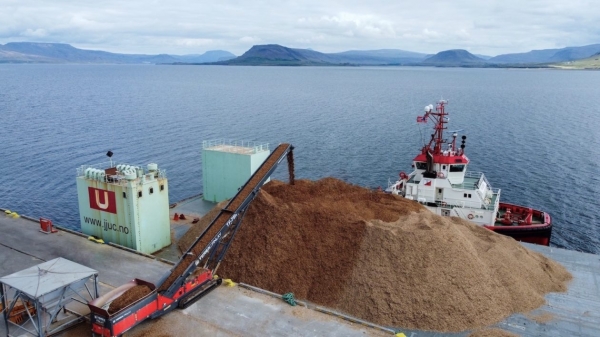Last May in Grundartangi, a small port in western Iceland, a barge piled high with wood chips began making regular trips to a patch of ocean 190 miles from the coast.
Last May in Grundartangi, a small port in western Iceland, a barge piled high with wood chips began making regular trips to a patch of ocean 190 miles from the coast. By September, almost 20,000 tons — about 1,400 dump trucks’ worth — of “wood waste” had been pushed overboard. This was no attempt to clandestinely offload trash into the sea. Instead, it was one of the latest efforts in the race to rid the atmosphere of excess carbon dioxide.
Most people have heard of land-based carbon dioxide removal (CDR) schemes, most notably “direct air capture.” Iceland is a pioneer in this realm — the Climeworks Orca plant, located not far from the country’s capital, Reykjavik, is vacuuming 4,000 metric tons of CO2 from the atmosphere and injecting it deep into the earth each year. But that is far from the amount experts say is necessary. In its most recent assessment report, the Intergovernmental Panel on Climate Change (IPCC) noted that carbon dioxide removal “is required to achieve global and national targets” of limiting warming to between 1.5 and 2 degrees C to avoid “major, irreversible ecological and social impacts.”
Read more at: Yale Environment 360
At the startup Running Tide's facility in Iceland, wood chips are loaded onto a barge for disposal at sea. (Photo Credit: Running Tide)




